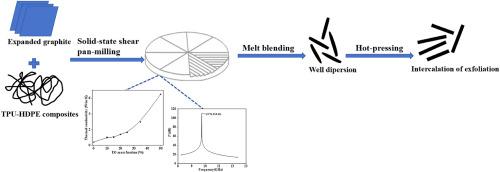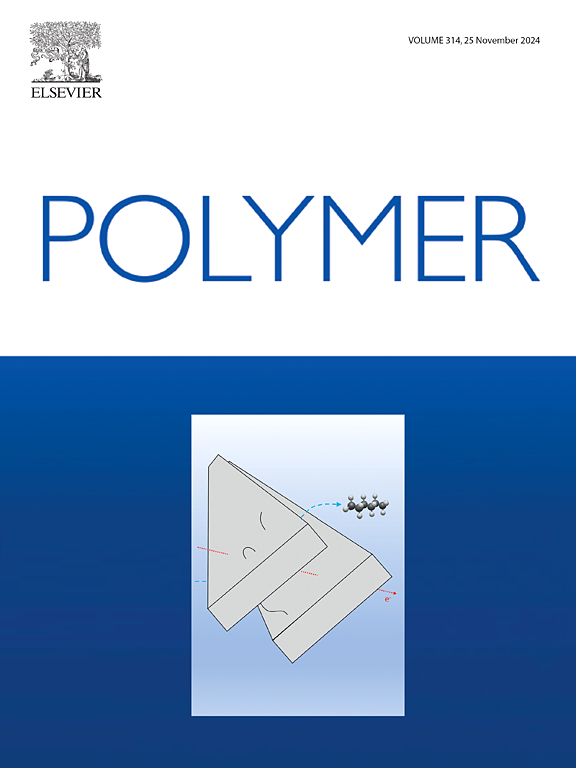Solid-state shear pan-milling preparation of graphene/TPU-HDPE nanocomposites with thermal conductivity and electromagnetic shielding
IF 4.1
2区 化学
Q2 POLYMER SCIENCE
引用次数: 0
Abstract
Electromagnetic pollution and overheating present significant challenges in the development of microelectronic devices. Polyolefins, particularly high-density polyethylene (HDPE), are frequently used polymers in these devices. Therefore, enhancing the electromagnetic shielding efficiency (EMSE) and thermal conductivity of polyolefins is crucial for their performance in such applications. In this article, we synthesized a thermoplastic polyurethane (TPU) composed of 1,5-Naphthalene Diisocyanate (NDI), poly-caprolactone diol (PCL), and 1,4-butanediol (BDO) to regulate the viscoelasticity of high-density polyethylene (HDPE). The findings demonstrate that the graphenization of expanded graphite (EG) and the formation of nanocomposites with TPU-HDPE are achieved during the solid-state shear pan-milling process. This results in the uniform dispersion and high incorporation of 1–3 layers of graphene within the TPU-HDPE matrix. At an EG mass fraction of 50 %, the composite material achieves a thermal conductivity of 6.50 W/m·K, which is 16.25 times higher than that of HDPE. Its electrical conductivity reaches 113.1 S/cm. The EMSE measured as absorption loss (A) and total losses (T), increases as the electromagnetic frequency ranges from 8 GHz to 8.67 GHz. At 8.67 GHz, maximum A and T values of 59.04 dB/mm and 63.08 dB/mm, respectively, are observed.


求助全文
约1分钟内获得全文
求助全文
来源期刊

Polymer
化学-高分子科学
CiteScore
7.90
自引率
8.70%
发文量
959
审稿时长
32 days
期刊介绍:
Polymer is an interdisciplinary journal dedicated to publishing innovative and significant advances in Polymer Physics, Chemistry and Technology. We welcome submissions on polymer hybrids, nanocomposites, characterisation and self-assembly. Polymer also publishes work on the technological application of polymers in energy and optoelectronics.
The main scope is covered but not limited to the following core areas:
Polymer Materials
Nanocomposites and hybrid nanomaterials
Polymer blends, films, fibres, networks and porous materials
Physical Characterization
Characterisation, modelling and simulation* of molecular and materials properties in bulk, solution, and thin films
Polymer Engineering
Advanced multiscale processing methods
Polymer Synthesis, Modification and Self-assembly
Including designer polymer architectures, mechanisms and kinetics, and supramolecular polymerization
Technological Applications
Polymers for energy generation and storage
Polymer membranes for separation technology
Polymers for opto- and microelectronics.
 求助内容:
求助内容: 应助结果提醒方式:
应助结果提醒方式:


